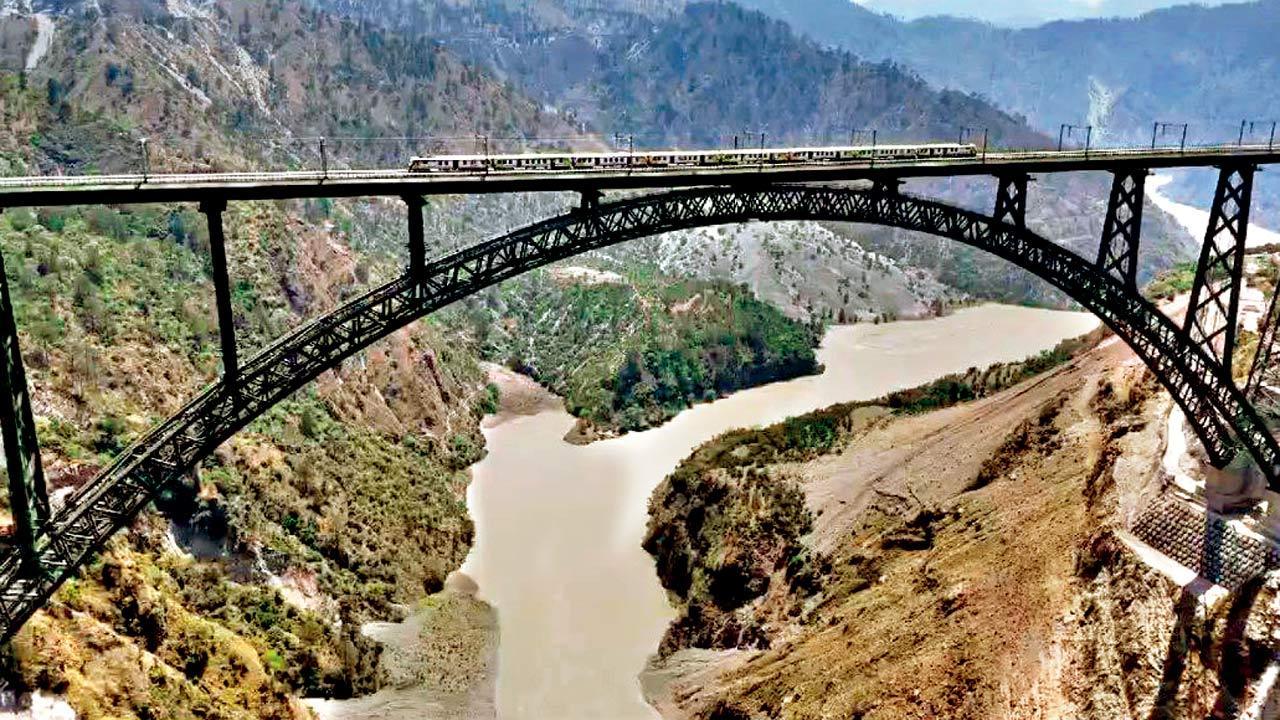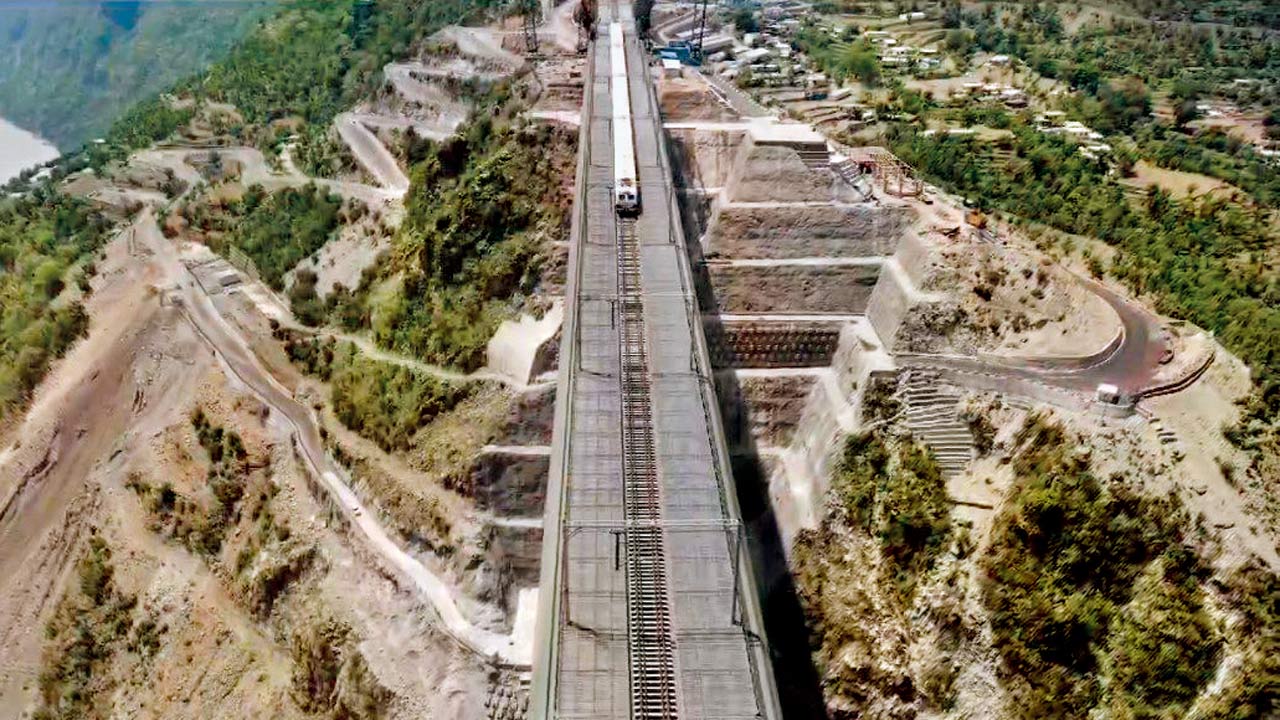Chenab Bridge, towering above Eiffel Tower, boasts cutting-edge technology with sensors, blast protection, set to revolutionise Railways

The Chenab Bridge that is 35 metres higher than the Eiffel Tower. File pic
In a first for Indian Railways, the world’s tallest railway bridge over the Chenab River is now equipped with state-of-the-art technology, including over 100 sensors, a 780-metre long blast protection platform, and a control room with 150 servers. The Chenab Bridge, 35 metres higher than the Eiffel Tower, is a symbol of Atmanirbhar Bharat and was constructed entirely by Indian engineers.
With train operations expected to start this year, the bridge features a blast protection platform to absorb impacts during operations and 120 sensors to monitor the bridge’s structural health. “These sensors will provide real-time data on wind velocity, temperature, humidity, and vibrations,” said a railway board official.
The 1,315-metre-long steel and concrete arch bridge can sustain wind speeds up to 260 km/h and withstand high-intensity earthquakes. The project faced significant topographical, geological, and tectonic challenges. “Wind velocity varies in hilly areas, making it essential for Indian Railways to monitor wind speed closely,” an official added.

Part of the Kashmir rail link project, the Chenab Bridge includes sensors that trigger alarms if wind speeds exceed safe limits. Located between Bakkal and Kauri in Jammu’s Reasi district, it is a crucial link in the Katra-Banihal section of the Udhampur-Srinagar-Baramulla Rail Link project. “Trained personnel will monitor and operate the bridge’s structural health system, overseeing wind speed, direction, air temperature, and loads,” the official noted.
Additionally, the project features India’s longest tunnel (T-49), spanning 12.77 km. “Globally renowned tunneling experts were involved, and approximately 12 lakh cubic meters of earth was excavated,” explained an official.
 Subscribe today by clicking the link and stay updated with the latest news!" Click here!
Subscribe today by clicking the link and stay updated with the latest news!" Click here!










